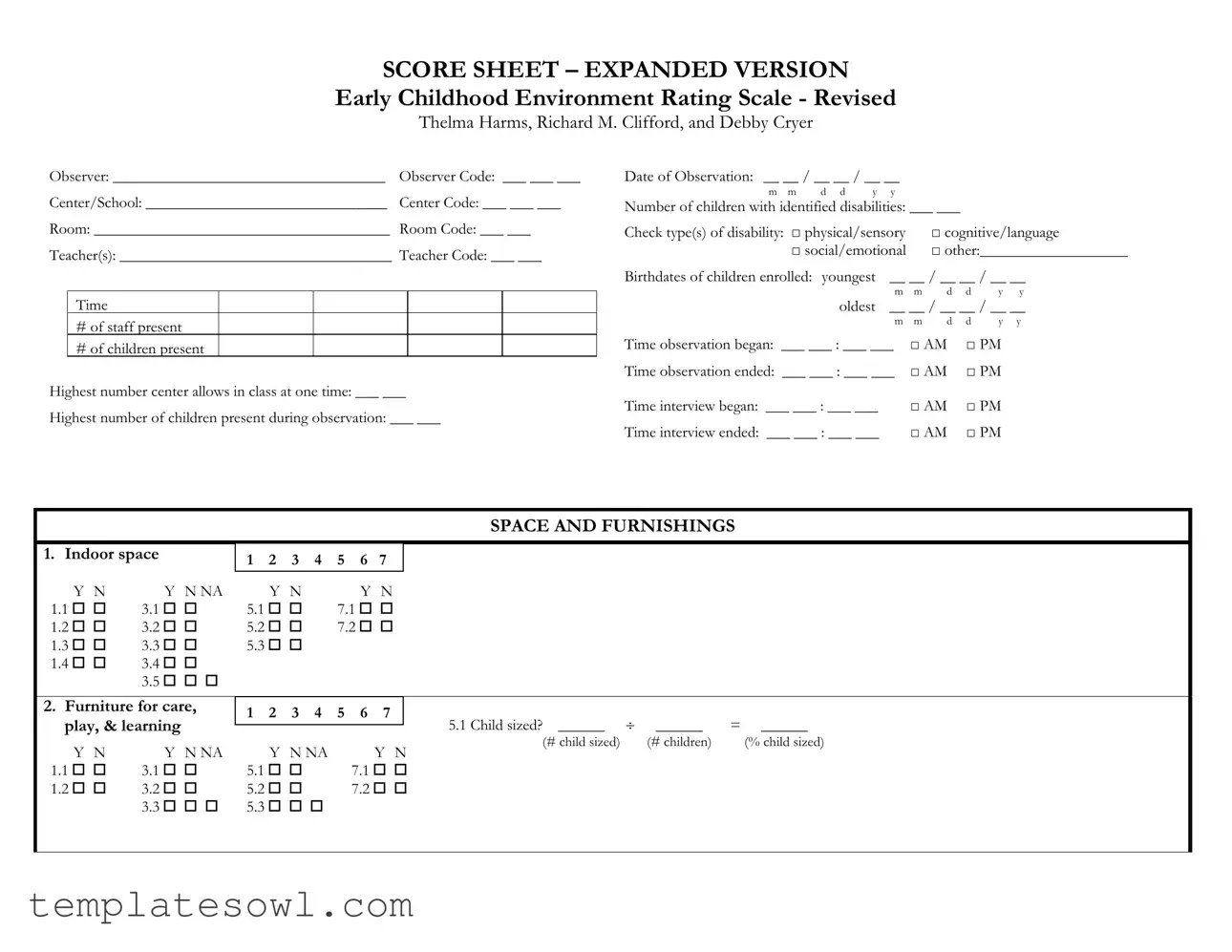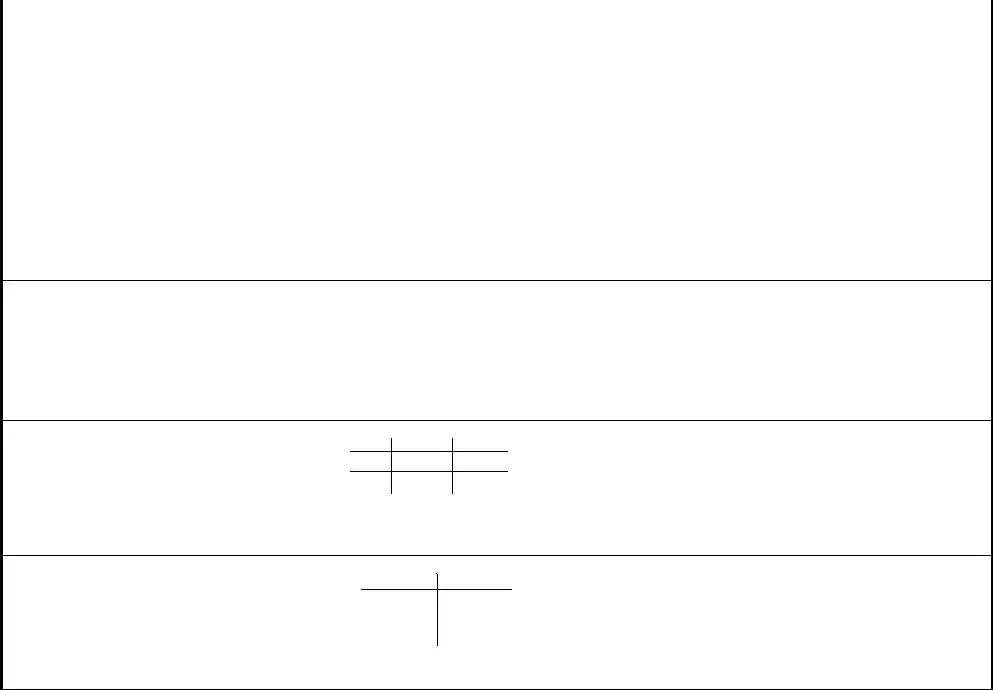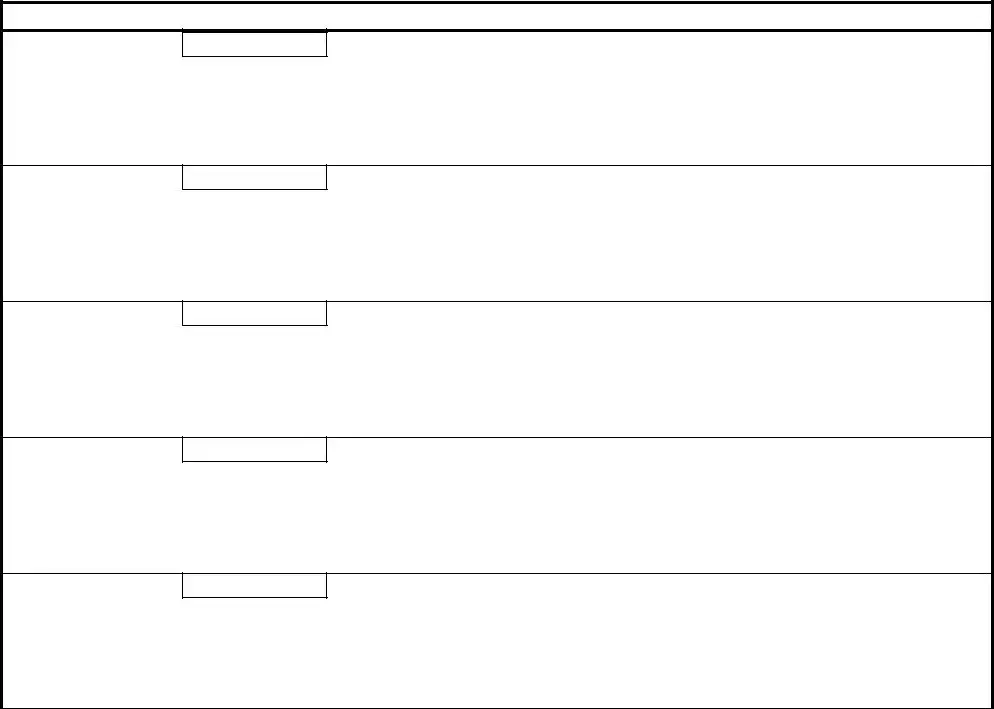What is the Ef 1143 A form?
The Ef 1143 A form is a comprehensive observation tool designed to assess early childhood environments. It incorporates the Expanded version of the Early Childhood Environment Rating Scale (ECERS-R), created by Thelma Harms, Richard M. Clifford, and Debby Cryer. This form helps educators evaluate various aspects of their learning environment, including space, furnishings, personal care practices, and the promotion of language and reasoning skills among children.
Who should use the Ef 1143 A form?
This form is intended for use by early childhood educators, program administrators, and evaluators. It serves as a valuable resource for anyone involved in assessing or improving the quality of early childhood education programs. By utilizing this form, users can gain insights into how well their environment meets the developmental needs of children.
How does the observation process work?
The observation process involves filling out the Ef 1143 A form during a scheduled visit to the early childhood program. The observer records various details, such as the number of children and staff present, the timing of the observation, and specific notes on the environment and activities taking place. This systematic approach allows for an accurate evaluation of the program's strengths and areas for improvement.
What sections are included in the Ef 1143 A form?
The Ef 1143 A form consists of several key sections. These include evaluations of space and furnishings, personal care routines, language and reasoning activities, and general activities. Each section contains specific items that observers rate on a numerical scale, providing a comprehensive overview of the program's environment and practices.
How is the scoring determined?
Observations in the Ef 1143 A form are scored on a scale typically ranging from 1 to 7. Higher scores indicate better quality in specific areas, while lower scores suggest the need for improvement. The average score for each major section is calculated by dividing the total points received by the number of items scored. This assists in identifying overall program strengths and weaknesses.
What should be done with the completed Ef 1143 A form?
Once completed, the Ef 1143 A form should be reviewed and analyzed to determine areas that may need enhancement. It's beneficial to share results with staff to foster discussions about quality improvement. Programs may use this information to develop action plans, allocate resources more effectively, or seek professional development opportunities aimed at raising standards in their early childhood settings.
How often should the Ef 1143 A form be used?
Regular assessments using the Ef 1143 A form are recommended. Many programs opt for annual evaluations to monitor their progress. However, it can also be beneficial to conduct more frequent observations during times of significant change, such as after implementing new curriculum strategies or transitioning to new staff. This ongoing reflection helps maintain a high standard of care and education.
Can the Ef 1143 A form be adapted for different contexts?
While the Ef 1143 A form is designed for early childhood programs, it can indeed be adapted for different settings or contexts. Programs that cater to diverse age groups or specialized learning environments can modify certain sections to better fit their specific needs. However, any adaptations should maintain the integrity of the assessment process to ensure reliable evaluations.
Where can I find more information about the Ef 1143 A form?
Additional information about the Ef 1143 A form can typically be found through early childhood education resources, training workshops, and professional organizations focused on childhood development. Many educational institutions and training programs also provide guidance on the effective use of this form, making it easier for educators to incorporate it into their practices.







